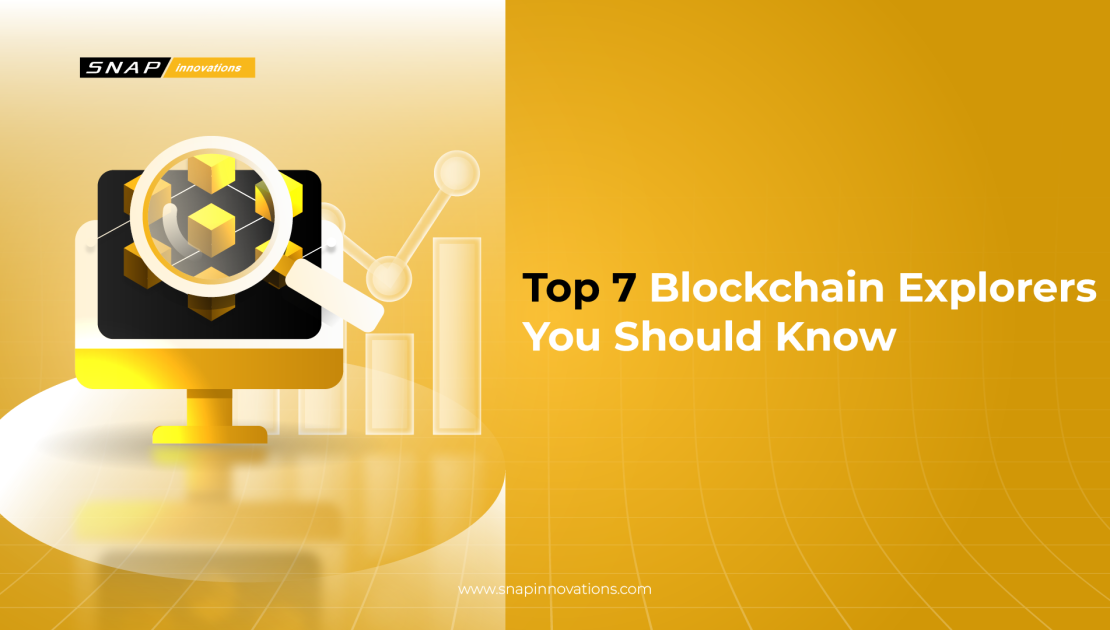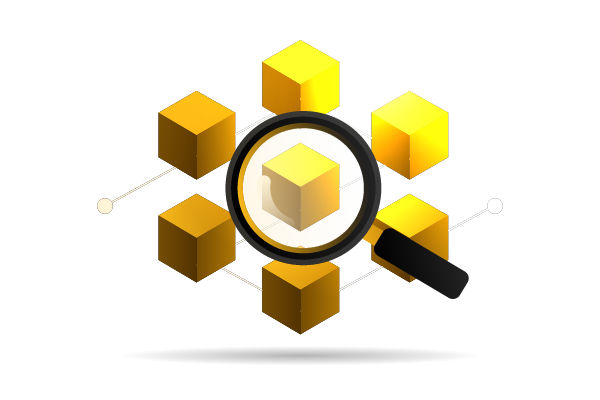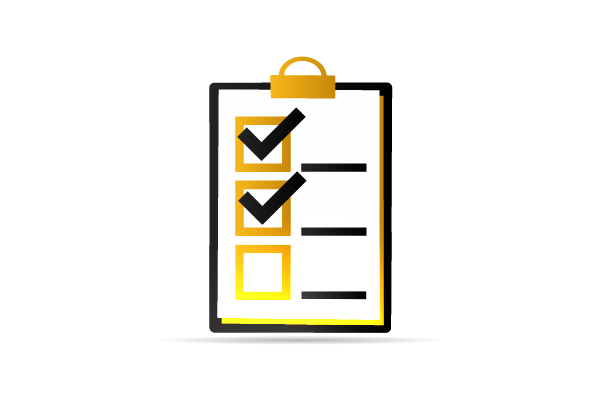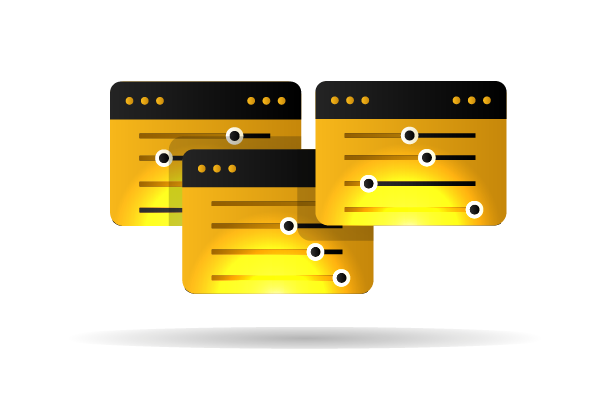Top 7 Blockchain Explorers You Should Know in 2026

Blockchain technology is built on principles of transparency, decentralization, and immutability. Every transaction that occurs on a blockchain is recorded permanently and can be viewed by anyone with access to the internet. However, interacting directly with raw blockchain data is incredibly difficult for the average user. This is where blockchain explorers come in. They offer a user-friendly interface to search, navigate, and analyze data stored on a blockchain.
Blockchain explorers make it possible for users to monitor transactions, check wallet balances, trace token movements, and review historical block data. In this article, we’ll take a deep dive into what a blockchain explorer is, explore the top 7 blockchain explorers in 2026, compare their strengths in a table and chart, and offer clear recommendations depending on your use case.
What Is a Blockchain Explorer?
 A blockchain explorer is a software tool or web-based application that enables users to interact with and examine the contents of a blockchain. This includes viewing transaction histories, block confirmations, wallet balances, contract interactions, and many other critical data points that are otherwise buried within the decentralized system. Think of a blockchain explorer as the equivalent of a search engine for a blockchain network it translates raw blockchain data into human-readable formats.
A blockchain explorer is a software tool or web-based application that enables users to interact with and examine the contents of a blockchain. This includes viewing transaction histories, block confirmations, wallet balances, contract interactions, and many other critical data points that are otherwise buried within the decentralized system. Think of a blockchain explorer as the equivalent of a search engine for a blockchain network it translates raw blockchain data into human-readable formats.
Beyond just basic searches, advanced explorers allow users to follow transactions in real time, inspect the performance of nodes and validators, analyze token distribution, and even dive into smart contract logic. Developers often rely on explorers to verify that transactions have been completed or to troubleshoot errors in contract deployment. Explorers also offer a level of transparency that reinforces trust within decentralized networks. In essence, blockchain explorers are critical infrastructure for the broader blockchain ecosystem.
Also read: Automated Trading Platform : The Power of Algorithmic Trading
Criteria for Evaluating Blockchain Explorers
 Evaluating blockchain explorers involves more than simply checking which chains they support. A robust explorer should be judged across a spectrum of capabilities that determine how well it serves the needs of its users—whether casual observers, developers, or enterprise analysts.
Evaluating blockchain explorers involves more than simply checking which chains they support. A robust explorer should be judged across a spectrum of capabilities that determine how well it serves the needs of its users—whether casual observers, developers, or enterprise analysts.
1. Chain Support
The most fundamental criterion is the scope of chain support. Some explorers are designed exclusively for one blockchain, such as Solscan for Solana or HeLaScan for HeLa, while others like TokenView and Blockchair span dozens or even hundreds of blockchains. The broader the chain support, the more versatile the explorer becomes.
2.Search and Data Depth
Another essential feature is data depth and search functionality. The best explorers not only show raw data but provide advanced filtering, full-text search, SQL-style querying, and real-time transaction feeds. This is particularly valuable for developers or analysts seeking to dive into the blockchain for audits, research, or app development.
3. User Interface and Usability
User interface and usability also play a huge role. A cluttered interface can render even the most feature-rich explorer unusable for non-technical users. Look for clean design, intuitive navigation, and well-organized dashboards.
4. API and Developer Tools
APIs and developer tools are a major consideration for teams building on top of blockchains. Explorers like BlockCypher offer powerful APIs and webhooks for event monitoring, transaction pushing, and more, which can be invaluable for wallets, dApps, and analytics tools.
5. Analytics and Visualization
Visualization and analytics help transform raw blockchain data into actionable insight. Features like token charts, wallet activity graphs, or gas price heatmaps are not just cosmetic—they allow users to understand trends and make informed decisions.
6. Performance and Reliability
Finally, consider performance and reliability. A good blockchain explorer should load quickly, remain stable under high network activity, and provide uptime guarantees. Explorers used in enterprise or security-focused environments should also prioritize privacy and transparency, offering open-source options or allowing private deployments.
Top 7 Blockchain Explorers You Should Know in 2026
 With so many blockchain explorers available today, it can be challenging to know which one is right for your needs. Below, we’ve highlighted six of the most powerful and widely used blockchain explorers in 2026. These tools stand out for their reliability, features, chain support, and overall usability. Whether you’re a developer, investor, or casual user, one of these explorers is likely to suit your workflow.
With so many blockchain explorers available today, it can be challenging to know which one is right for your needs. Below, we’ve highlighted six of the most powerful and widely used blockchain explorers in 2026. These tools stand out for their reliability, features, chain support, and overall usability. Whether you’re a developer, investor, or casual user, one of these explorers is likely to suit your workflow.
1. HeLaScan
HeLaScan is the dedicated blockchain explorer for the HeLa Network, a Layer 1 blockchain known for its AI-native capabilities and optimization for scalable dApps. As HeLa continues to gain traction for its high throughput and low-latency operations, HeLaScan has emerged as the essential tool for anyone interacting with its ecosystem. The explorer provides real-time insights into blocks, transactions, contract activity, token transfers, and validator performance.
With support for both the HeLa testnet and mainnet, HeLaScan ensures that developers and users alike can seamlessly transition between development and production environments. The interface is streamlined, making it accessible even to those new to blockchain. Its search capabilities are robust, allowing users to drill down into specific transactions or addresses. As HeLa evolves, HeLaScan is set to expand its capabilities to include more analytics, interactive charts, and developer integrations.
2. Etherscan
Etherscan is widely recognized as the premier blockchain explorer for Ethereum and other EVM-compatible networks. Known for its clean design, comprehensive data access, and unmatched smart contract support, Etherscan is the default choice for users navigating the Ethereum ecosystem. It allows users to view token transactions, internal contract calls, gas usage, and more.
Developers particularly appreciate Etherscan for its support of verified smart contract code, which can be published and inspected directly on the site. Token pages include not just transfer history but also holder distribution and price analytics. For DeFi and NFT users, Etherscan provides valuable insight into token swaps, staking contracts, and ERC-721 transactions. It’s not a multi-chain tool, but for Ethereum, there is no better choice.
3. Blockchair
Blockchair is a powerful multi-chain blockchain explorer that offers support for a wide range of blockchains including Bitcoin, Ethereum, Litecoin, Dogecoin, and Cardano. Its major strength lies in its advanced data filtering capabilities, which are ideal for researchers, analysts, and developers who need to sort through large volumes of blockchain data. Users can filter by transaction size, block time, or even specific embedded text.
In addition to standard transaction and block data, Blockchair offers downloadable datasets, privacy analysis tools, and blockchain comparison metrics. Its API access is robust and supports both real-time and historical data queries. While the interface is slightly more technical and dense than others, the trade-off is greater power and flexibility.
4. TokenView
TokenView sets itself apart by supporting over 100 different blockchains, making it one of the most comprehensive explorers available today. From Bitcoin and Ethereum to Polkadot and Tron, TokenView delivers unified access to transaction data, token analytics, and block histories across numerous ecosystems. It’s especially useful for investors and developers who work across multiple platforms.
The explorer includes features like wallet tracking, token rankings, and mining statistics, providing valuable insights that go beyond just transaction data. While its UI can be inconsistent and some translations may need refinement, its breadth of support and update frequency make it a leading tool for blockchain data aggregation.
5. Solscan
Solscan is the leading explorer for the Solana blockchain, which is known for its speed and efficiency. Designed specifically to handle Solana’s high throughput, Solscan provides real-time tracking of transactions, token movements, validator performance, and NFT metadata. Its layout is clean and responsive, mirroring the high-speed nature of the Solana chain itself.
In addition to basic transaction lookups, Solscan integrates directly with DeFi protocols, staking platforms, and NFT marketplaces built on Solana. Users can explore liquidity pools, verify wallet balances, or monitor staking rewards with ease. While it’s limited to the Solana ecosystem, its performance and integration depth are unmatched within that scope.
Also read: White Label Copy Trading: What You Need to Know
6. BlockCypher
BlockCypher is a blockchain explorer built with developers in mind. Supporting Bitcoin, Ethereum, Litecoin, and Dogecoin, BlockCypher focuses on providing high-performance APIs and webhook functionality. This makes it an excellent choice for developers building wallet services, blockchain integrations, or payment systems.
Its interface is simple and accessible, which is great for quick checks and educational purposes. While it may lack some of the deep analytics and graphical insights of other explorers, its strength lies in backend functionality. For projects that require automation, monitoring, or real-time blockchain event tracking, BlockCypher is one of the most reliable and easy-to-integrate tools available.
7. Chainlens
Chainlens is an emerging blockchain explorer built to support both enterprise-level blockchain infrastructure and public networks. Developed with modern design principles, Chainlens offers a clean and fast user interface, making it ideal for enterprise solutions, developers, and analysts who value both aesthetics and performance. It is particularly useful for organizations using Hyperledger Besu or other Ethereum-compatible permissioned networks.
What sets Chainlens apart is its scalability and customization options. It supports private deployments and real-time indexing, and provides high-fidelity visualizations for smart contract interactions, transaction logs, and token analytics. Additionally, Chainlens has begun expanding into supporting public EVM chains, which broadens its utility for developers and teams operating in hybrid blockchain environments. While newer compared to some legacy explorers, Chainlens is rapidly growing and being adopted in enterprise circles.
Table Comparison
 To help you compare the most important features of the top blockchain explorers at a glance, the table below outlines their supported chains, key strengths, and limitations. This summary provides a quick reference for choosing the right tool based on your specific needs.
To help you compare the most important features of the top blockchain explorers at a glance, the table below outlines their supported chains, key strengths, and limitations. This summary provides a quick reference for choosing the right tool based on your specific needs.
| Explorer | Supported Chains | Key Strengths | Limitations |
| HeLaScan | HeLa | Chain-specific support, real-time updates, smooth UI | Only supports HeLa |
| Etherscan | Ethereum & EVM chains | Smart contract analytics, gas tracking, token explorer | Limited to EVM chains |
| Blockchair | BTC, ETH, LTC, ADA, etc | Multi-chain, advanced filtering, analytics tools | Dense UI, less support for new chains |
| TokenView | 100+ Chains | Broad coverage, mining stats, token analytics | Inconsistent UI, translation issues |
| Solscan | Solana | Fast, NFT and DeFi integration, validator insights | Limited to Solana |
| BlockCypher | BTC, ETH, LTC, DOGE | Developer APIs, webhooks, easy integration | Limited analytics, fewer chains supported |
Conclusion
Blockchain explorers are indispensable tools for anyone interacting with blockchain networks—whether for personal transactions, research, or development. While no single explorer fits every need, there are outstanding options tailored for different blockchains and use cases.
HeLaScan leads the way for HeLa network users, while Etherscan, Blockchair, TokenView, Solscan, and BlockCypher cover various aspects of the blockchain world in depth. Choosing the right explorer means understanding your blockchain ecosystem, your use case, and the features that matter most to you.
Kriss Jefferson
I am specialized in financial technology with a focus on trading infrastructure and brokerage systems. Over the past six years, I’ve worked on designing, deploying, and integrating multi-asset trading platforms, ultra-low-latency execution stacks, and end-to-end brokerage automation. My work centers on how the right architecture improves fill speed, risk controls, and operational resilience for brokers and professional desks. Every piece I publish is driven by research and real production constraints, with practical guidance for institutions building scalable, secure, and high-performance trading environments in today’s fast-moving markets.

